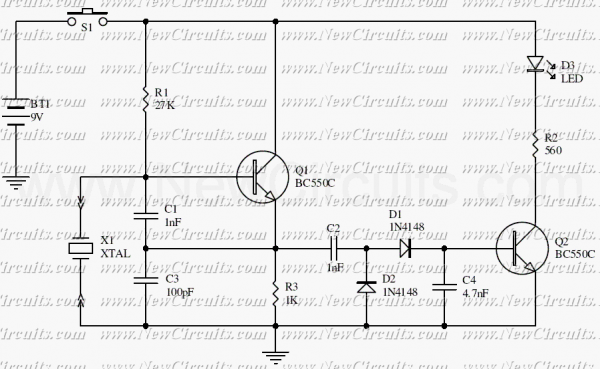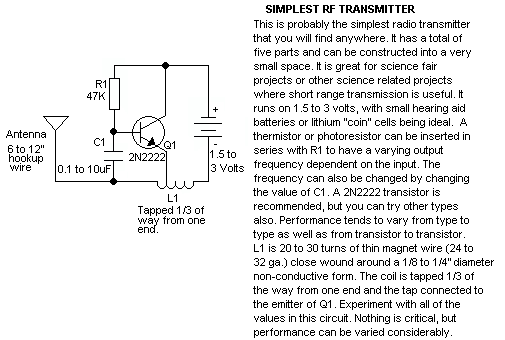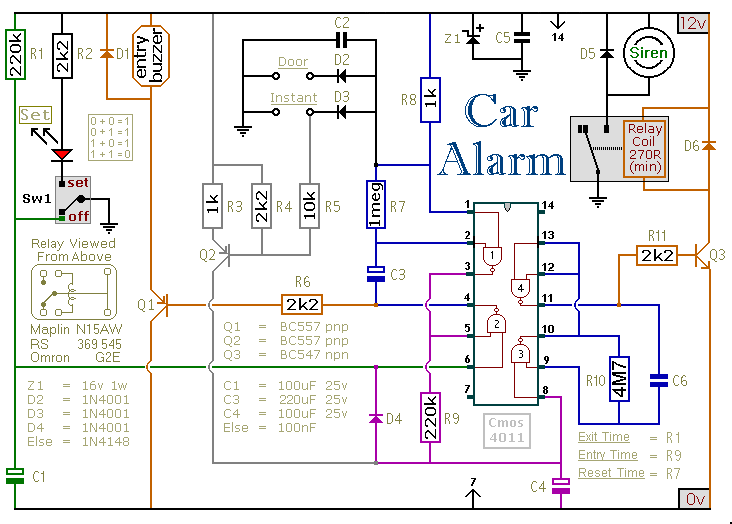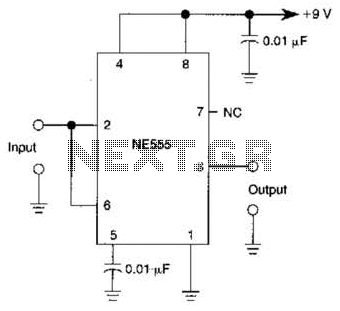
A simple DDS for 136kHz
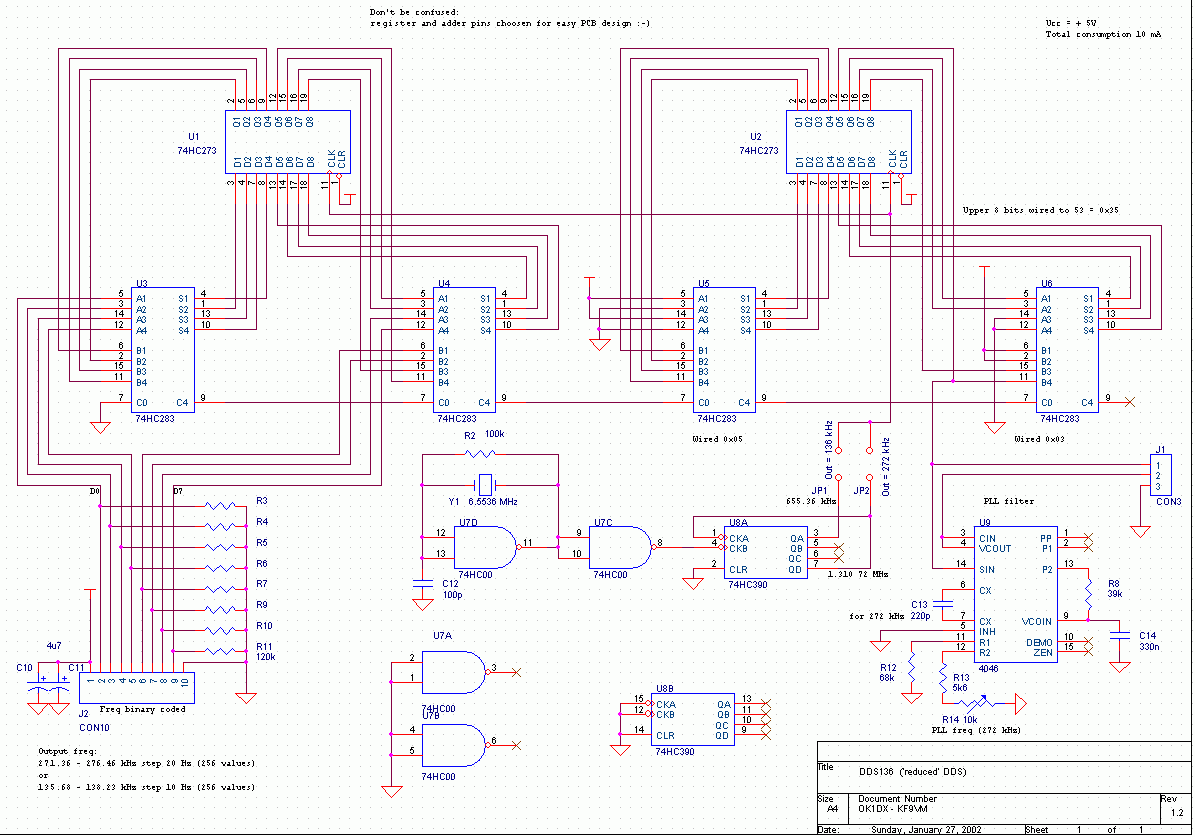
The hex switches are connected to J2 as follows: pin 1 is the common of both switches (+5V), pin 2 is the least significant bit (LSB) up to pin 5 which is the most significant bit (MSB) of the first switch. Pins 6 to 9 represent the LSB to MSB of the second switch. The oscillator was modified slightly to ensure reliable startup with a low-cost Farnell crystal (Philips 74HC00 chip). It is recommended to increase R2 to 1 Meg-Ohm and add an additional capacitor of approximately 200pF from pins 9, 10, and 11 to ground. Proper decoupling of the voltage-controlled oscillator (VCO) chip (4046) is essential, and a 5V regulator with a slightly higher output should be selected since it must be powered from a regulated supply; it does not perform well with 4.9V. The other chips can tolerate up to 6V. A buffer stage is required to level-shift the output to 12V if it is intended to drive the G3YXM transmitter. A common-emitter NPN stage was utilized for this purpose, with a 10k resistor from the input to the base, a 4.7k resistor from the base to ground, a 1k resistor from the collector to 12V, and the emitter grounded. The output is taken from the collector, which is sufficient to drive a meter of coaxial cable.
The circuit employs hex switches for user input, where each switch provides a binary input to the system. The arrangement allows for a straightforward interface for selecting values, with the common pin connected to a +5V supply, ensuring that the switches can operate correctly. The modification of the oscillator circuit highlights the importance of component selection and values in achieving reliable operation. By increasing the resistance of R2 to 1 Meg-Ohm and adding a capacitor for stability, the oscillator can be fine-tuned to work effectively with the chosen crystal.
Decoupling the VCO is critical in preventing noise from affecting its performance. The recommendation to use a regulated 5V supply emphasizes the need for stable power to ensure the proper function of sensitive components like the 4046 chip. The tolerance of other chips for up to 6V indicates a design consideration for flexibility in power supply options.
The inclusion of a buffer stage to shift the output voltage to 12V is necessary for compatibility with the G3YXM transmitter. The use of a common-emitter NPN transistor configuration is a standard approach in level-shifting applications, providing adequate gain and output drive capability. The resistor values chosen for the base and collector ensure that the transistor operates within its linear region, allowing for effective signal transmission over a meter of coaxial cable, which is crucial for maintaining signal integrity in RF applications.The Hex switches are connected to J2 as follows: pin 1=common of both switches (+5V) 2=LSB up to 5=MSB of first switch. Then 6=LSB of second switch up to 9 which is MSB. I modified the oscillator slightly to get my cheap Farnell crystal to start reliably (Philips 74HC00 chip).
Increase R2 to 1 Meg-Ohm add another C of about 200pF from pins 9, 10, 11 to earth. Ensure you decouple the VCO (4046) chip properly and choose a 5V regulator with a slightly high output (it MUST be fed from a regulated supply), it didn`t seem to like 4. 9V! The other chips will stand up to 6V. You will need a buffer stage to level-shift up to 12V if you want to drive the G3YXM TX with it. I used a single common-emitter NPN stage; 10k from input to base, 4k7 from base to ground, 1k from collector to 12V, emitter grounded.
The output comes from the collector. This isn`t great but it will drive down a metre of coax! 🔗 External reference
The circuit employs hex switches for user input, where each switch provides a binary input to the system. The arrangement allows for a straightforward interface for selecting values, with the common pin connected to a +5V supply, ensuring that the switches can operate correctly. The modification of the oscillator circuit highlights the importance of component selection and values in achieving reliable operation. By increasing the resistance of R2 to 1 Meg-Ohm and adding a capacitor for stability, the oscillator can be fine-tuned to work effectively with the chosen crystal.
Decoupling the VCO is critical in preventing noise from affecting its performance. The recommendation to use a regulated 5V supply emphasizes the need for stable power to ensure the proper function of sensitive components like the 4046 chip. The tolerance of other chips for up to 6V indicates a design consideration for flexibility in power supply options.
The inclusion of a buffer stage to shift the output voltage to 12V is necessary for compatibility with the G3YXM transmitter. The use of a common-emitter NPN transistor configuration is a standard approach in level-shifting applications, providing adequate gain and output drive capability. The resistor values chosen for the base and collector ensure that the transistor operates within its linear region, allowing for effective signal transmission over a meter of coaxial cable, which is crucial for maintaining signal integrity in RF applications.The Hex switches are connected to J2 as follows: pin 1=common of both switches (+5V) 2=LSB up to 5=MSB of first switch. Then 6=LSB of second switch up to 9 which is MSB. I modified the oscillator slightly to get my cheap Farnell crystal to start reliably (Philips 74HC00 chip).
Increase R2 to 1 Meg-Ohm add another C of about 200pF from pins 9, 10, 11 to earth. Ensure you decouple the VCO (4046) chip properly and choose a 5V regulator with a slightly high output (it MUST be fed from a regulated supply), it didn`t seem to like 4. 9V! The other chips will stand up to 6V. You will need a buffer stage to level-shift up to 12V if you want to drive the G3YXM TX with it. I used a single common-emitter NPN stage; 10k from input to base, 4k7 from base to ground, 1k from collector to 12V, emitter grounded.
The output comes from the collector. This isn`t great but it will drive down a metre of coax! 🔗 External reference
